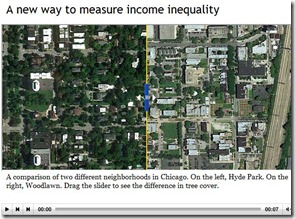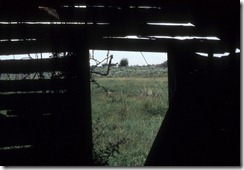In January 1946 several American soldiers jumped in a Jeep to drive up into the Swiss Alps on leave for 7 days of snow skiing. It was to be a welcome break from mop-up patrols assigned to dismounted tankers to intercept Nazi war criminals along the border of recently occupied southern Germany in the months following the end of WWII.
Little did one of the soldiers, my father, know that the trip would take them past Zimmerberg on the shores of Lake Zurich as they wound their way to the slopes of Mt. Arosa and St. Moritz or that this lake shore was the ancestral homeland of those from which he inherited his last name, Bowman, which was Anglicized from the 17th-century Bauman, a derivation of the 14th-century Buman.
Dad passed away a few weeks after the events of 9/11 and the mystery of his Bowman origins were not unraveled until a few weeks ago when they were resolved by a research breakthrough and DNA results.
However, he may have had a reflection of his Swiss Amish roots when he and I were forced to bale hay at barely an idle with modern Farmall equipment in the 1950s, while his father insisted on raking it ahead of us, the old fashioned way, behind a team of prized draft horses named Duke and Bally.
Dad was never much into history. His reason for heading to Mt. Arosa was probably that it was the homeland of a boy-hood hero, Walter Prager who had won the first-ever downhill ski race and then had become world champion in the downhill in 1931 when my dad was only 8 years old. During Dad’s teenage years, Prager came to America as coach of the noted Dartmouth Ski Team.
Ironically, two years after my dad and his army buddies skied St. Moritz on leave and in the months before I was born, that area would host the Winter Olympics with Prager as coach for the U.S. men’s and women’s teams.
Even though he never seemed very reflective, I believe the juxtaposition of beautiful St. Moritz and the horror of Dachau stayed with my father for the rest of his life.
Passing through Zimmerberg that day on their drive up into the Swiss Alps, Dad was unaware that his 16th great-grandfather on the Bowman side had been born and lived his entire life in view of the medieval Hapsburg castle at Rapperswil which juts out on a peninsula across Lake Zurich there at its narrowest point.
In 1709, as a 22-year-old, my 7th great-grandparents and eight other Amish families migrated to America where they helped establish a settlement called Pequea (pronounced Peckway) on the banks above the Susquehanna River about 14 miles south of Lancaster, Pennsylvania.
But their path to America began nearly two hundred years earlier when my 13th and 14th great-grandfathers became Anabaptists who were then known as the Swiss Brethren, a Christian belief that formed around Zurich shortly before or right after Martin Luther brought the endorsement of magistrates to what had been a far more Radical Reformation.
Ironically, this only resulted in Anabaptists being persecuted by both Catholics and Protestants, and generations of my family migrated first to an area just south of Bern and then to Thun on the shores of Thunersee with the view of another medieval castle, the Zähringer.
It is here that Jakob Amman lived -- a tailor and preacher who led a schism that distinguished the even more conservative Amish from what would then be known as Mennonites.
A clue that my family was Amish at that point is not only that they lived around Thun where Amman preached but that they followed him down, along a portion of the route my father drove on leave, into the Alsace region of what is now France but has also been German over the centuries. At that time Mennonites tended to avoid persecution by moving down into the German Palatinate.
Evading persecution, a clue that my ancestors followed Amann down into the Alsace region was the death of one of my ancestors there. Another clue that they fled further up the Rhine to Holland due to persecution by the King of France and probably dismayed by the instability in the region, was that another ancestor died there.
Passenger manifests and land surveys confirm when and where my Bowman ancestors first settled in America. The English here quickly Anglicized the name and confused by the derivation of their aid in Holland deemed them Mennonites the name used by their Anabaptist cousins.
In fact, that may also be the derivation of Pennsylvania Dutch, most of whom were German and Swiss.
Ironically, I had no inking of this part of my heritage when I visited the area around Lancaster during the return-leg of a road-trip to upstate New York this summer when I snapped the second photo shown in this blog.
My great-great grandfather Hyrum Webster Bowman was notoriously vague and tight-lipped about his origins, often switching out Pennsylvania with New Jersey or Delaware.
There were clues in census and other records, but the solution to the puzzle dawned on me one day when I realized that people often think I lived in Idaho Falls because I was born there. Actually, when I was born my parents lived 50 miles north in the Yellowstone-Teton nook of Idaho. “IF” was just the location of the nearest hospital.
Hyrum was born 40 miles south of where they lived in New Holland, PA near Wilmington, Delaware, probably so his mother could be near her mother while she carried him and for delivery. But Hyrum’s parents returned to the New Holland area shortly after. In the days since this epiphany, a lot of other background has fallen into place.
By the time my great-great grandfather Hyrum headed west, apparently for reasons that made him hide his past, my ancestors had probably joined less stringent religions in that area including Lutheran. Still being excommunicated or “shunned” could have been a factor.
He made his way to a small town south of Burlington, Iowa and settled there around 1840, where Mormons, having fled persecution themselves, were concentrating. He married but his wife and child died during childbirth.
Soon he met and married my great-great-grandmother Hannah, a single mother who had also lost a spouse. She had migrated from England after joining the Mormon faith and soon Hyrum was baptized as well. By 1855, they were awaiting a wagon train west in Council Bluffs and by 1856 they settled in West Jordan, Utah, just in time for drought, food rationing and another plague of swarming grasshoppers.
Here Hyrum was excommunicated, probably during a church crackdown on working on the Sabbath and then re-baptized which is ironic because the meaning of Anabaptist is “rebaptizers” or the less reverent term, “dunkers.”
In the months after my great-grandfather was born, the family moved north, just as the Civil War broke out, to colonize Richmond, Utah where Cherry Creek flows out of the Bear River Mountains, near the border with Idaho. There they started a sawmill and molasses factory.
Hyrum became a polygamist and my great-great-grandmother Hannah left him.
I don’t mean to make too much of the Swiss heritage because I am a mix of so many backgrounds including Welsh, French, Dutch, Irish, German, English, Scots-Irish and even a little Viking, but it is clearly fun and rewarding to solve these riddles.
And if you’ve ever been to Cache Valley, Utah in the winter, you might just believe that my old great-great grandpa Hyrum’s Swiss roots were calling him there.










